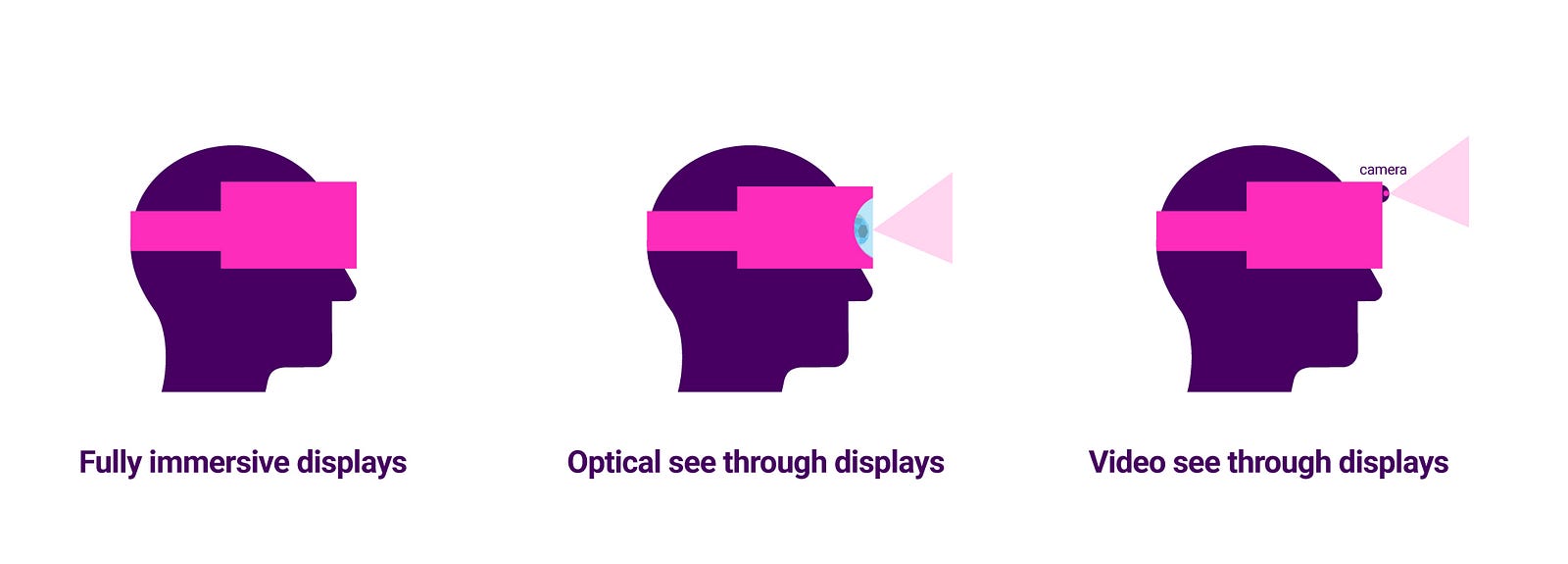Fundamentals of display technologies for Augmented and Virtual Reality
Display technologies
Display types
Fully immersiveThese are standard fully immersive virtual reality displays. These stereoscopic displays are combined with sensors to track position and orientation. They completely block the user’s view of the outside world like in the book ‘Ready Player One’.
Optical see through
Video see throughWith these type of smart glasses, the user views reality that is first captured by one or two cameras mounted on the display. These camera views are then combined with computer generated imagery for the user to see. The HTC Vive VR headset has an inbuilt camera which is often used for creating AR experiences on the device.


Imaging technologies
Imaging and display technologies have improved greatly in the past few decades. High end CRTs have been mostly replaced by four key imaging technologies:
Liquid Crystal Displays (LCD)LCDs are common in high definition televisions and have been used in ARVR displays since 1980s. This display type consists of an array of cells containing liquid crystal molecules sandwiched between two polarizing sheets. This contraption rests between thin glass substrates printed with millions of transistors. For colored LCDs, an additional substrate containing red, green and blue filters is positioned over each cell of the substrate. A single RGB liquid crystal cell is called a subpixel. Three subpixels form one pixel.A electric current is passed through the glass substrates. Varying the current allows the LCD to modulate the passage of light to create a precise color. If all subpixels are fully open, it creates a white light.Liquid crystal cells do not emit their own light and require backlighting. The liquid crystal cells can only vary the passage of light to create the desired color and subsequently an image.


Organic Light Emitting Diode (OLED)This display technology is based on organic (carbon and hydrogen bonded) materials that emit light when an electric current is applied. This is a solid-state display technology where energy passed through the organic sheet is released in the form of light, also known as electroluminescence. Colors can be controlled by carefully crating organic emission, however most manufacturers add red, green and blue films in the OLED stack. There are two types of OLED panels:
- Passive Matrix OLED (PMOLED):Like CRTs, this display type consists of a complex electronic grid to sequentially control individual pixels in each row. It does not contain storage capacitors making update rates slow and a high power consumption to maintain a pixel’s state. These are mainly used for simple character and iconic displays.
- Active Matrix OLED (AMOLED):Unlike PMOLEDs, AMOLEDs consist of a thin transistor layer that contains a storage capacitor to maintain each subpixel’s state providing greater control over individual pixels. In case on AMOLEDs, individual pixels can be completely switched off enabling deeper blacks and higher contrast. These are most suitable display types for near-eye virtual and augmented reality devices.
